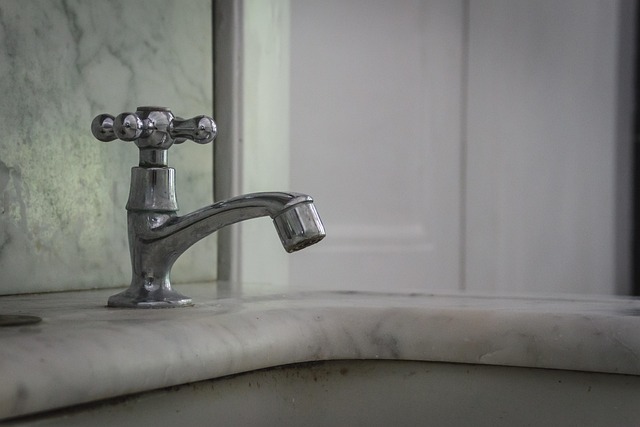The text discusses the severe environmental impact of conventional bathroom products and highlights the growing trend toward eco-friendly bathroom materials. By choosing compostable toilet paper, biodegradable personal care items, water-efficient fixtures, and natural lighting, individuals can significantly reduce their carbon footprint. This shift requires collaboration between consumers, governments, manufacturers, designers, and retailers to educate, incentivize, and innovate for a greener future.
In today’s conscious consumer landscape, understanding the environmental impact of our everyday choices is paramount. Traditional bathroom products often leave a significant carbon footprint due to their plastic composition. This article explores the transformative power of switching to eco-friendly bathroom materials, specifically focusing on compostable and biodegradable alternatives. From reducing waste to mitigating environmental harm, embracing these sustainable options offers a simple yet powerful way to contribute to a greener planet.
Understanding the Impact of Traditional Bathroom Products
The products we use in our bathrooms have a significant environmental impact, with many conventional items ending up in landfills, contributing to pollution and greenhouse gas emissions. Traditional bathroom essentials, such as plastic toothbrushes, disposable wipes, and synthetic toiletries, take centuries to decompose, leaving behind harmful microplastics that contaminate water sources and harm wildlife. This has prompted a growing movement towards adopting eco-friendly alternatives, especially with the rise of sustainable and compostable bathroom materials.
By opting for eco-friendly bathroom materials, consumers can significantly reduce their carbon footprint. Compostable toilet paper, for instance, is made from renewable resources like bamboo or hemp, ensuring faster decomposition compared to traditional paper products. Biodegradable personal care items, free from harmful chemicals, offer a healthier alternative for both users and the environment. These choices not only minimize waste but also encourage a more sustainable lifestyle, paving the way for a greener future.
Exploring Compostable and Biodegradable Alternatives
The shift towards a more sustainable lifestyle has led many to explore eco-friendly alternatives in their daily routines, and this trend extends to the realm of bathroom products. When it comes to enhancing our bathrooms with an environmentally conscious touch, compostable and biodegradable materials are at the forefront of this movement. These innovative options offer not just sustainability but also performance, ensuring that our bathing experience remains top-notch while reducing our environmental footprint.
From compostable toilet paper to biodegradable hand soaps and shampoo bars, the variety of eco-friendly bathroom materials available is expanding rapidly. By choosing these alternatives, consumers can contribute to a significant reduction in plastic waste and water pollution, as many traditional bathroom products are non-biodegradable and take hundreds of years to decompose. With proper disposal methods, such as composting or recycling where accessible, these new options provide a promising solution for those seeking to make their bathrooms more harmonious with the natural world.
Benefits of Eco-Friendly Materials in Daily Routines
Adopting eco-friendly materials in our daily routines, especially within the confines of our bathrooms, offers a multitude of benefits for both the environment and personal well-being. These sustainable alternatives to conventional products play a significant role in reducing our carbon footprint. By choosing compostable or biodegradable bathroom items like bamboo toilet paper, natural fiber towels, and eco-conscious skincare, we contribute to minimizing landfill waste and preserving natural resources.
Moreover, eco-friendly bathroom materials often promote a healthier lifestyle. Free from harsh chemicals and synthetic fragrances, these products are gentler on sensitive skin and reduce the risk of exposure to toxic substances. This shift towards sustainability can foster a deeper connection with nature, encouraging a holistic approach to personal care and a more mindful consumption pattern.
Integrating Sustainable Options into Your Bathroom
When it comes to transforming your bathroom into an eco-friendly oasis, there are numerous sustainable options available that can make a significant impact on the environment. One of the key areas to focus on is choosing compostable or biodegradable products. For instance, opt for bamboo-based toilet paper and personal care items, as bamboo grows quickly and sustainably. Additionally, consider switching to organic cotton towels and linens, which are not only gentle on your skin but also on the planet.
Integrating eco-friendly bathroom materials extends beyond just the products you use. Think about updating your fixtures and fittings with water-efficient options, such as low-flow showerheads and dual-flush toilets. These simple changes can lead to significant water savings over time. Moreover, utilizing natural lighting and energy-efficient lighting solutions reduces your carbon footprint, making your bathroom a more environmentally conscious space.
Tips for Encouraging Industry-Wide Adoption and Change
Encouraging industry-wide adoption of compostable and biodegradable materials, especially in the realm of eco-friendly bathroom products, requires a collective effort. One key strategy is to educate consumers about the environmental benefits of these alternatives. By raising awareness, folks can make informed choices that drive market demand. Governments and regulatory bodies play a crucial role too; implementing and enforcing policies that incentivize or mandate the use of sustainable materials across industries, including the bathroom sector.
Additionally, fostering collaboration among manufacturers, designers, and retailers is essential. Innovative partnerships can lead to game-changing products that seamlessly blend functionality with sustainability. The industry should also explore diverse sourcing options for these materials, ensuring a reliable supply chain while minimizing environmental impact. Ultimately, embracing eco-friendly bathroom materials isn’t just a trend; it’s a step towards a greener future, revolutionizing the way we think about everyday products and their ecological footprint.
By transitioning to compostable and biodegradable bathroom products, we can significantly reduce our environmental footprint. Eco-friendly materials offer numerous benefits, from minimizing plastic waste to promoting sustainable practices. Integrating these options into daily routines encourages industry-wide adoption, fostering a greener future for our planet. Let’s embrace the change and make conscious choices towards an eco-conscious bathroom experience.
